#rogue one acts i and ii my beloveds
Explore tagged Tumblr posts
Text
✨Meet the Blorbos✨
Or: a small guide to my characters and AUs in Dragon Age universe. They’re all in continuity, I played more than once and suffer from a sever case of indecision, so here you go.
A small scheme, more details under the cut!
More details for the Elves - More details for the Hoomans
Dragon Age Origins:
Alyra Mahariel. Double-wielding Rogue, Duelist + Bard, True Neutral, ❤️ Alistair / Morrigan
Dragon Age II:
Raina Hawke. Double-wielding Rogue, Shadow, Chaotic Good, ❤️Merrill+Isabela > The Trash Raccoon
Garrett Hawke. Mage, Spirit Healer + Blood mage, Chaotic Good, ❤️ Fenris
Dragon Age Inquisition:
Aisling Lavellan. Mage, Lightning + Knight Enchanter, Neutral Good, ❤️Cullen
Radha Lavellan. Double-wielding Rogue, Tempest, True Neutral, ❤️ Solas
THE AUs:
DadWolf AU: Modern time AU, follows da2 + Inquisition. Solas woke up 30 years before, Varric is older and Malcolm's best friend. They co-parent Aisling and Dorian, shenanigans happen.
Dark Lady AU: Someone on Instagram asked me if Aisling was Sauron. It's a crossover between Dragon Age and LOTR/The Silmarillion where Aisling is Sauron. "It was all a big misunderstanding". Read it here!
Whale AU: Fully historical, non fantasy story. It started as an AU, it's now a fully original thing. Aisling is a marine biologist dead set in having her research on sperm whale behaviour published. Raina (name is to be changed) is a cross-dresser harpooner that shipwrecked in Iceland. Aisling saves her, the ship sails itself.
Cuties Coexisting: A parallel world, Fenris met the Lavellan and hid with them until Act 2 in Dragon Age. Fenris/Lavellan, very very angsty, I'm not planning on writing more of it, but it's open for prompts if you like it. Read it here!
(named by @/daggerbean )
Alyra Mahariel
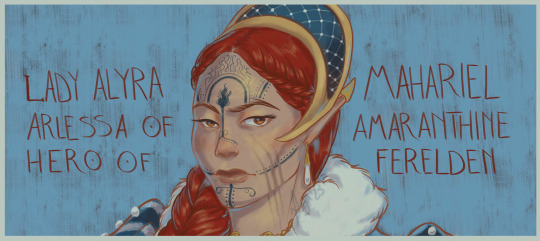
Double-wielding Rogue, Duelist + Bard, the shade of True Neutral that’s tired of everyone’s shit and is not remotely paid enough to deal with your problems, but will do it anyway because somebody might as well.
No-shit-taken person, she appears to be cold and unsympathetic, dued to the mother of all resting bitch face and the nice tendency to not blink when you’re saying something particularly stupid and she wants to underline that she’s judging you. Will go down in a fight when she’s dead, and it will take a while to kill her. Under the surface she’s very caring: her Vallaslin is for Sylaise, the goddess of the Hearth, and she will do many things to protect her loved ones. She’s reliable, once you’re on her good side or she feels responsible in keeping you alive, she will. Would manage to sell ice cubes to penguins.
Pansexual and poly, romanced both Morrigan and Alistair.
Currently Warden-Commander of Fereldan, in a tense relationship with Weisshaupt, Arlessa of Amaranthine and Chancellor (and mistress) of King Alistair. Did the ritual, Kieran is 100% her son if you ask her.
Don’t speak good of the Guerrins to her.
Raina Hawke

Double-wielding Rogue, Shadow, Chaotic DumbassGood and official Purple trash raccoon.
Would reply with a witty remark even in a life or death situation, is the queen of awful coping mechanisms. Very street-wise, never had some formal training, learnt everything on the go becoming something very difficult to predict in a fight. Human disaster, disappointed her mother in every single one of her life choices, on purpose after Malcolm died and the mediator between them was no more. She took care of the farm and her siblings, will go the extra mile and some to keep everyone safe and fed and warm, but refused to abide to any other request. Is the chilliest person in the world, will not question and be friendly -if you like a witty, sarcastic friend that is- until you step outside her boundaries. Won’t shut up if the ideals she believes in are crossed, and can’t stand people in power who do nothing.
She knits like her life depend on it, all her friends have hand-knitted garments as gifts. Will only refer to Varric as “Her beloved husband”, particularly if there’s Bianca around.
Lesbian, in a happy poly relationship (after fucking up gloriously with both) with Merrill and Isabela.
Sided with the Mages, exiled Anders at the end.
Carver dead, Bethany in the Circle, if you ask her it’s all her fault.
Garrett Hawke

Mage, Blood mage + Spirit healer, Chaotic Good and the one who just knew he would have better stayed in his bed today. He knew it.
One year younger than Raina, they grew up together, joined at the hip. He just wants to live a peaceful life, have his own farm, grow pumpkins and cabbages and go with the flow. As it is, will let Raina lead towards the next crazy adventure and tone her down a little, or catch her when she’s choosing something overtly risky. It was him who convinced Raina to take him but leave Bethany at home for the Deep Roads and he never really forgave himself for it. Particularly because Raina took the blame for it. Got the message from Malcolm that if he wanted to make it as an Apostate, the number one rule was to lay low, be pleasant. Will not stay at home if his family or friends are in danger, tho. Learnt Spirit Healing from Anders, but he’s not extremely talented for it: knows the basics, can stitch up cuts, his talent with Spirits are bones. Learnt Blood magic spending more and more time with Merrill when she moved in with Raina, and that’s his talent. He usually mixes the two things: if he’s a mediocre healer with Spirits, he is pretty talented drawing energy from blood, manipulating it and the body to heal. Keen for the same reason on manipulating and using Water in his magic. Everything that flows. Has a severe case of Dad humour.
Bisexual, romanced Fenris.
Same choices as Raina, he would have forced Anders to fix his mess up, but considering he used him and his sister and de facto involved them without telling them… Didn’t put up a fight.
Aisling Lavellan
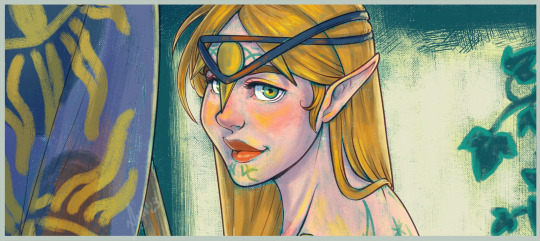
Mage, Lightning + Knight Enchanter. So much of a Neutral Good she is your mom friend and therapist and she's not cottagecore, she's directly grandma-core. Will ask if you ate. And serve you something more anyway.
She was adopted by the Lavellans at 6 and put her whole effort into becoming the best Second ever. And she managed: she passed as First as soon as she got her Vallaslin. The former First, Pavyn, was more socially savvy than her, but didn’t put her effort. Could be a Spirit Healer, but when she was 20 she had to restore to Blood Magic to save her friend and got scared that she never touched any Healing spell again. Instead, she’s a decent herbalist, convinced that everything can be solved with enough Elfroot treated in the necessary way. Horse Girl extraordinaire and a very practical person who likes to work more than to talk. Nice and welcoming, will give a second chance to almost everyone (the big exception is Erimond). Hates being called the Herald of Andraste. Magically very savvy, she’s not the most powerful spellcaster around, but she’s extremely precise: would catch a running rabbit with a lightning. Loves to experiment on magic with Dorian, they formed a great team working together: he theorizes, she puts in practice, they’ll invent teleportation given enough time.
Bisexual, romanced Cullen (tried to romance Cassandra, you can mock her for having a Templar kink).
The Inquisition is for all, strongly refused being the Herald of Andrasted. Mages as full-fledged allies, Wardens rehabilitated, Celene reconciled with Briala and on the throne (with some blackmail just in case, but she couldn’t bring herself to like Gaspard or trust he won’t turn on Briala at the first chance). Didn’t drink from the Well, disbanded the Inquisition and became a Red Jenny. Chose to redeem Solas if that was possible.
Radha Lavellan.

Rogue, Tempest. True Neutral and a person who’ll read you in five minutes, the Keeper told her her Vallaslin was either Dirthamen or none.
Elder adopted sister of Aisling, she and Pavyn (eldest) are the sons of the Keeper. She stood around mages for enough to know some theory and use it for her specialization. A woman of few words, won’t speak if she has nothing important to say, and passes as haughty and judgemental even if she’s not. She just likes to observe people and gather every single scrap of knowledge she can get her hands upon. She should have been the one to travel to the Conclave and spy, but Aisling convinced the Keeper and the Clan to go in her place. Feeling guilty, she jumped on the first ship as soon as Aisling wrote and told them she had to stay with the Inquisition, to help her. Sees her as her responsibility, and struggled to accept the fact that she was not. Since it was clear when she arrived at Skyhold that Aisling couldn’t get back to the clan any time soon, she joined in, and started to work with Leliana, as a spy. And oh she’s good at it. Hurt her hand badly in a fight, her right hand can’t grab fully and isn’t strong at all. Learnt to work around it, is pretty much ambidextrous in activities that doesn’t require a strong grip.
Romanced Solas. (ouch)
Didn’t agree with Aisling on the Wardens, Celene or the Well of Sorrows, but she was the one educated to lead, and she trusts her judgement.
#dragon age#dragon age oc#warden mahariel#inquisitor lavellan#female hawke#aisling lavellan#aisling the dark lady au#dadwolf au#cuties coexisting#alyra mahariel#raina hawke#garrett hawke#radha lavellan#greypetrel#writing petrel#character masterpost#Ask me about my blorbos#it's been AGES since I planned on doing something like that and finally it's here!#Radha: “She's my sister.” *Aisling proceeds in making a joke about poop* Radha: “... She's adopted.”
31 notes
·
View notes
Text
some stuff i read and watched in june:
taskmaster (s1-5): haven't done an early seasons rewatch in so long, s4 and 5 are basically perfect 2 me. incredible that mark watson manages to be both my favourite type of taskmaster guy (hopelessly despairing) and also nearly won the thing lol. nish forever obviously
silo: got well into this! probably at some point apple will stop throwing millions at sci-fi shows but i'm going to enjoy their folly in the meantime
mission: impossible ii: hadn't seen this one! the weakest of the lot but the john woo of it all is undeniable
mission: impossible iii: PSH outrageously good as the villain, hi keri russell
mission: impossible - ghost protocol: so much fun, especially the sequences where you can see brad bird's animation brain going
mission: impossible - rogue nation: ILSA my beloved, the opera sequence is so gorgeous, no notes!
mission: impossible - fallout: it's good when henry cavill reloads his arms, it's better when tom cruise is sprinting around london rooftops and breaking his ankle etc, my most basic trait is that i Love when they're in london like oooh tate modern. anyway i'm very ready for dead reckoning
asteroid city: the bits about making art really got to me! the vending machines were cool!
joint security area: crash landing on you prepared me for this, blank check weren't lying when they said it was homoerotic, song kang-ho forever etc
dodie smith, the town in bloom: the most delightful narrative voice i've read in Ages and v funny. easy to sell me on 1920s theatrical shenanigans
k patrick, mrs s: So hot and butch, i liked the butch friendship stuff almost more than the sex stuff. more sexy lesbian novels Please
kj charles, the secret lives of country gentlemen: another winner from KJC, my most reliable romantic comfort reads. this time it's smugglers!
alice slater, death of a bookseller: sticky little thriller about being poisoned by true crime, great sense of place, So many pints of dark fruits
laura kay, wild things: bisexual disaster in love with her best friend, tragically very me- and also george russell-coded, god i want to swim in a pond again
SOME STUFF I SAW AT ROCK WERCHTER
the dj on the first nigt who played a mash up of i'm gonna be (500 miles) into temperature and then the 1d cover of one way or another into little lion man (deeply cursed fandom flashbacks etc)
weyes blood with candelabras and glowing hearts and amazing adam curtis projections on the big screen behind her
king princess sending the gay girls of belgium absolutely wild - "you wanna hear a sad lesbian song?"
matty healy is a dickhead but he's very good at being the frontman of the 1975. like if ben whishaw was straight and kind of disgusting
stormzy!!! literally the rain was pouring during blinded by your grace pt 2
mumford and sons - this whole festival was like being borne back ceaseless into the past but the cave still fucks me up, marcus really in his ken marino era, face-wise
PUP - i do believe if this tour doesn't kill you, i will to be a wholly perfect song, they had a trans flag on stage, best vibes of the festival
sigur ros - sometimes you just want to be in a massive barn with thousands of people with your faces turned up in the dark feeling like you're inside the sound somehow
muse - fucking incredible live band still!! every time i'm see them i'm floored by how hot chris the bassist is and then i forget about it and then i see them again and i'm poleaxed etc. they had a tech meltdown during knights of cydonia at the encore so we got showbiz instead!!
christine and the queens - beautiful and terrible as the dawn
jacob collier - asked if we wanted to get funky then put on a special hat, bit george russell-coded in the face
arctic monkeys - sometimes you just want to be in a field with one of your oldest friends singing the songs of your youth!! i love the 70s act actually! there are so many sexy songs on AM!! the skies finally cleared for the beautiful full moon, thank you belgium, good night
10 notes
·
View notes
Text
This is super super boring, but
I just finished running a meeting for an org where I was leading the riveting task of updating our constitution and by-laws (actually, just Constitutional Articles I-II, with Constitutional Articles III-V and By-laws I-VI STILL FORTHCOMING). And I was just like “Well, I went to the archives, and the most recent copy of this document I could find was last revised in 1981, a year where I did not yet exist on this planet, and technically we’ve been running rogue this entire time because this document does not in any way match present realities! And also in order to ratify revisions technically we’d need to snail mail this draft to the entire membership, per this 1981 document’s Constitution Article V and By-laws Article VI...”
Prior to this meeting, I spent all afternoon collating old versions of this document/sister documents from other regional versions of this org, plus transcribing this typewriter-written document into a damn Google Doc, but to make myself feel better about this while process I was just like
This. This is my Nanao LARP moment.
Because I am certain that once she and Kyouraku were transferred to 1st Nanao took it upon herself to look up what the actual Constitution and Bylaws for the Gotei were and she was just like “HOLY SHIT this has not been updated in 2000 years I must fix this” (respectfully but furiously uttering curses over Sasakibe’s grave).
To be honest, I think Gotei procedure has probably changed less in the last 2000 years than anything in our world has in the last 41, but I do think it’s changed. We see changes even just in the span that the main series timeline covers, to say nothing of what seemed potentially different in TBTP vs. now. And I think with the changing of the Captain Commandership (and Nanao’s insistence on actually making use of the Constitution and Bylaws document), other things do change, too. (Though I actually don’t think the overall direction of the organization is likely to experience a dramatic sea change under Kyouraku. Mostly I’m thinking of the bitty, innocuous procedural things that secretly underpin Soul Society’s hawkish hegemony.)
Like, I want to know wha the official, as-written policies for Captain’s and VC meeting are. The Bleach Wiki seems to think that there are votes in Captain’s meetings, and that decisions require unanimous votes. I have no idea where this info came from, but LOL the idea that these meetings are democratic in any form cracks me up?? Like, even the idea that there’s even a performative unanimous vote even if you can’t really vote seems like a stretch to me. We did not see them even to pretend to vote on the kidou cannon. And anyway, what is this, the Anarchist Society of Soul Society? Unanimous consensus? In my authoritarian regime?
We know that they have all this procedural shit about how one can become a Captain and how the Gotei is meant to interface with the Central 46 and probably in what order you’re supposed to stand in Captain’s meetings (my beloved). I just--I wanna see this document so bad.
I hope they spent 2 days arguing about “Article 1. Name and Jurisdiction” and what the official “colloquial” name of the Gotei would be.
3 years for the debate around how long a Captain’s seat should be allowed to stand unoccupied and what the trigger points are for determining an official Acting Captain.
10 years before anyone reads “Article II. Purpose” and realizes that the third thing listed is still “this organization shall lead maneuvers for the wholesale extermination of the Quincy, scourge upon this universe.”
#no brain just bleach#shinigamiology#gotei 13 constitution and by-laws#signed--someone who literally did spend 20 minutes on article 1 name for an organization that has been around since 1946#but does the parent org name go before or after! are there dashes commas etc? what does the IRS say what is the short colloquial form omgggg
11 notes
·
View notes
Text
Okay FINE I'll work on the Cassian fic and you can all leave me ALONE
#i am joking. nobody is asking me to update this fic. i have just legit been so frustrated with star wars that no sw thoughts would flow#rogue one acts i and ii my beloveds#fic: tsatmats
2 notes
·
View notes
Text
Star Wars: The Last Jedi Review by Tristan Riddell

This review may contain spoilers.
The first time I saw this film was in the theater on opening night. I wasn't sure how the experience was going to go, just like everyone else. When Force Awakens came out, no matter how you felt afterward, the nostalgia factor hit everyone hard. But when Last Jedi came out we were living in a post Force Awakens, post Rogue One world. Even Solo was in the middle of production. So the feeling was more of a meh, we'll see what happens.
There was a surprising amount of kids in the theater for a PG-13 film, but hey, it's Star Wars. I was initially hesitant at that because I loathe any kind of noise or distraction in the theater. But this turned out to be a plus because the kids loved the film and were very audible in their reactions. It only amped up my own excitement and interaction with the film. Sure I still was witness to its issues but it helped me see it through the eyes and wonder of a child. Which is why we all love Star Wars in the first place, that nostalgic trip in the way back machine.
However, when I watched it for the second time at my home on 4k release, I had no children surrounding me telling me to laugh at the porgs or ignore the pointless casino storyline. Most of the time when a beloved franchise of mine (or beloved director) makes a mediocre film, I appreciate it more the second time around. My expectations are tempered and my investment is nowhere near as fragile so I can just sit back and enjoy the characters (see Star Trek Into Darkness). I was very much hoping for this effect when sitting down to watch Episode VIII. Sadly, my second viewing did not create a more enjoyable experience and perhaps it even got a little worse.
A couple of days ago, further details were released for George Lucas' version of the sequel trilogy. Specifics of which are not important but what is important is that it was made official (even though it was blaringly obvious to viewers) that there is/was no plan for the sequel trilogy. Kathleen Kennedy has allowed/is allowing directors to just make it up as they go. This key factor could be the biggest reason why Last Jedi is not connecting with a large portion of audiences. Episode VIII doesn't feel like a sequel to Episode VII even though it takes places hours afterward. Heck, in the end, it doesn't even feel like we need Episode IX. I am not a Lucas fanboy and in fact, wish he removed himself from the director's chair much earlier. But you have to give the man credit that he had a plan, a vision, and unparalleled ambition that gave a cohesive story over several films and even TV. This is not that. This is now a Marvel model.
That isn't necessarily a knock or a bad thing. Overproducing Star Wars films with a Marvel feel and release schedule allows mediocre films or at least makes them less devastating. When Attack of the Clones came out, it was heartbreaking because at the time it was 1/6th of what we thought we were only going to get. Now, another film is always just around the corner.
We used to live in a world where the Episodes were the end all be all and people could do what they wanted with the standalones. Now it's made clear that the same amount of thought goes into the Episodes as the standalones. After Last Jedi, it's clear that this is more analogous to Age of Ultron than anything else. It's a big meet up, it has the characters you know and love, but it's just not as fantastic as Avengers or Civil War. Sometimes you get Ant-Man or Ultron. That's ok.
This safeguards our hearts but you can't have that without lowering your expectations. Give and take.
As for the film itself, it either explores characters more thoroughly (Kylo and Rey) does a huge disservice to them (Poe and Finn), or introduces pointless characters whose jobs could have been accomplished by pre-existing characters (Holdo and Rose).
I'm not going to talk about Luke. Luke Skywalker is an inkblot. However you feel about it means you're right.
This was a film of missed opportunity, especially when you consider the fact that the writer is also the director. A destroyed Republic was an unfortunate inherited problem for Johnson, but instead of course correcting or even finding some semblance of victory, he steered into the skid and doubled down by all but obliterating the Resistance. Now I'm not saying that this film needed to be the one in my head. That takes you down a dark path of Fanboyism that you can't come back from. The issue is that from a story perspective, Episodes do not exist in a vacuum. II is just as important as V and IV is just as important as VII. So they must be seen as a whole and obliterating all the hard work after Return of the Jedi somehow invalidates the victory within it.
That is from a macroscopic perspective, from a microscopic one, the flow is difficult. I can go along with new Force powers, changing space travel rules, and a ticking clock that slows down or speeds up depending on the action. It's a movie. We should all be forgiving on these kinds of things. But what I can't go along with is making characters mutineers who caused the death of hundreds of their compatriots, achieved no actual goal they set out to achieve, and then have the director expect us to herald them as heroes and the future of the Resistance. A leap of faith that is just too wide for me.
Kylo and Rey and their relationship/connection was the highlight of this film. Expertly directed, edited, and acted. This is the very reason why I gave the film three stars instead of less. It also gave us one of the coolest lightsaber fights in the entire franchise which is really saying something. But one pairing and one lightsaber scene can't carry a movie on its own.
Bloated and under-edited, Last Jedi distracts us with casinos, code breakers, mutiny, and not so witty banter when we really just want to see more of the Force users. Leia, Luke, Rey, Kylo, and yes, even Snoke.
Listen to my wife and I's podcast on Last Jedi at The Nerd Party. bit.ly/NerdNuptial83
4 notes
·
View notes
Text
Ranking a Saga
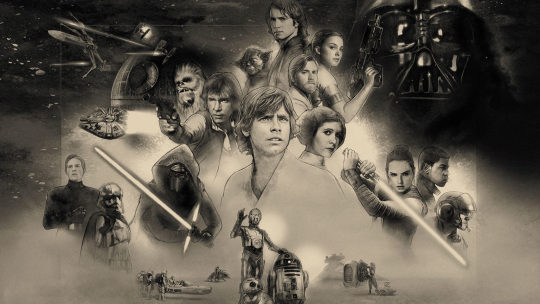
It’s that time again everyone! Two more Star Wars films have been released since I last posted this ranking in 2017, and one more, sure to be controversial, addition is on the way in just a few hours!
Part of my joy for this saga is seeing my opinions and tastes for it change over time. I find new strengths in works I didn’t originally love and see flaws in my old favorites. This time, I’ve gone ahead and ranked all existing saga films, Solo, Rogue One, and The Clone Wars animated movie from my least favorite to my cream of the crop.
Feel free to reply with your own rankings and favorites! I love sharing opinions on this site and every fan has different wants and needs for this franchise. I know my take on Rogue One has always been a minority, but I love that some find real value in it.
11. Star Wars: The Clone Wars (2008)
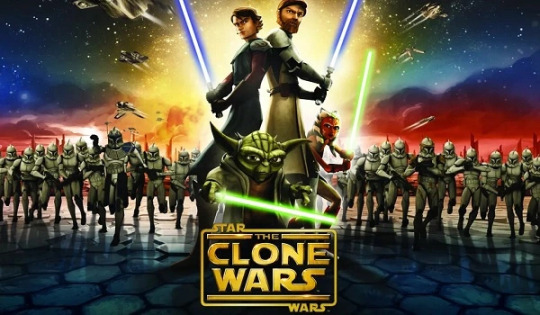
Watching the theatrical pilot for Star Wars: The Clone Wars is like watching a talented high school quarterback be assigned to play for a major NFL team. It’s taking something that in its own small, minor scale would be perfectly acceptable and potentially even good, and forcing it into a realm where it has no business belonging. This is the unfortunate task faced with director and eventual showrunner Dave Filoni and his crew. Star Wars: The Clone Wars is a movie that should not be a movie, in fact it barely functions as one to begin with.
I do not hide my love for the still flawed but at the same time charming, engaging, and compelling animated series that this film would spawn. It’s for this reason that the failings of The Clone Wars feel all the more painful.
Hastily edited together out of the initial five episodes for the series, quite simply everything about The Clone Wars is a mess for a film. Despite the best efforts of Director Dave Filoni, The Clone Wars cannot escape its slipshod construction. It moves along in hurts and jolts and switches focus too quickly to attain much of any narrative momentum.
It also hurts that the animation itself, while perfectly serviceable for a CG animated series for the late 2000’s, is stiff, clunky, and oddly flat. Environments are sterile and lacking in texture. Characters move in jerky motions and lack facial expressions. In a year that would bring us kinetic and gorgeously detailed CG animation from films like Wall-e and Kung Fu Panda, watching The Clone Wars is an ugly and even depressing affair.
The only passing grace for this film are the creative and at times epic in scope battle sequences, but when the film itself is this lacking in cohesion and heart it is hard to raise anything more than half-interest.
It’s unfortunate that this film would be the world’s first introduction to such beloved characters as Ahsoka Tano, Captain Rex, or George Lucas’s take on Asajj Ventress. It’s the definition of a bad first impression and it only grows more ugly and messy with each passing year.
Score: D
10. Star Wars Episode II: Attack of the Clones (2002)

By far the weakest of the so far released Saga films, Attack of the Clones acts as a call to action for all those who have issues with the prequel trilogy. While it has dropped the bizarre racial stereotyping of its predecessor, George Lucas’s second installment in the series’ second trilogy is filled with strange decision making and a convoluted plot structure.
Trying to understand the narrative of Attack of the Clones is often very difficult. While it is relatively easy to tune out and simply enjoy the spectacle of it all, the attempts to meld space opera with noir and political intrigue prove unfortunately more convoluted and stale than intriguing. In particular, the circumstances surrounding the creation and implementation of the clone army stretch credibility.
While The Phantom Menace made extensive and competent use of combining miniatures and digital effects, Attack of the Clones falls back on computer generated images to detrimental results. While it serves the sweeping battle sequences and wide arrange of alien creatures well, the pervasiveness of digital additions to the film’s world becomes distracting when it oversteps its bounds. In particular, the decision to make the armor for each of Temuera Morrison’s clonetroopers digitally rendered is an unnecessary decision and it gives a slightly uncanny feel to the clone army itself. Even worse are the completely digital environments which feel detached and weightless in their interactions with movie’s cast. It quite simply stands as the ugliest looking Star Wars film and that doesn’t seem slated to changed any time soon.
Ultimately though, the biggest failing of Attack of the Clones is Anakin himself. While Jake Lloyd may have struggled in The Phantom Menace he at least succeeded in turning Anakin into something of a likable character. While Hayden Christensen is a talented actor and he certainly improves by the time Revenge of the Sith arrives, it is hard to relate or even sympathize to the manner the character is presented in Attack of the Clones. He oscillates between arrogant, angry, and uncomfortable without giving us much to fall back upon. If we are meant to feel for his temptation and fall from the Light, then there needs to have been somethings there worth saving in the first place. By the time Attack of the Clones closes, we don’t have much of that.
The same can be said for the much maligned romance at the film’s center. While the concept is compelling in and of itself, Lucas’s writing and staging of the scenes can’t help but feel forced and impersonal. Both Natalie Portman, who was one of the previous film’s highlights, and Christensen struggle in finding a chemistry in the material that feels natural and the end result is something that at times approaches unwatchably uncomfortable in its presentation.
That being said, once the film’s political powder keg explodes, Attack of the Clones evolves into something intense and actually quite fun. Both the unique arena sequence and the Battle of Geonosis are visually stunning and entertaining action set pieces that are bolstered by a swashbuckling and charming performance by Ewan McGregor. While it does close out in the most disappointing lightsaber duel of the saga, it still ends on a relative high note given the meandering and detached mess that preceded it.
Score: C-
9. Star Wars Episode I: The Phantom Menace (1999)
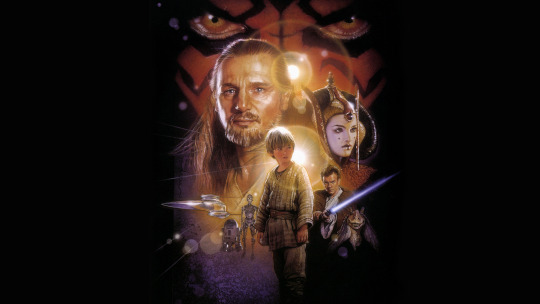
While still one of the weaker films in the saga, The Phantom Menace receives significantly more ire than perhaps it deserves. Much of this is likely due to the initial hype and disappointment that it brought with it during its release in 1999. Some of this is understandable considering that it does mark a significant step down in terms of quality from 1983’s Return of the Jedi and an even further one from the first two films. However, when viewed in context of both Attack of the Clones and The Clone Wars animated film there is something about The Phantom Menace that feels inherently more watchable and even entertaining.
Much of this is that despite the fact that the film’s structure is strange and lacking in cohesion, it does move along at a pretty steady speed and provides us with a wide variety of locations and faces. There is also something about the aesthetic of the whole thing that feels significantly more in line with the original Star Wars than both the other prequel films would provide. It helps that Lucas’s action direction, even if it does tend to the over complicated and unnatural, is visually arresting and engaging. Both the extended podracing sequence and the stellar lightsaber duel between Qui-Gon, Obi-Wan, and Darth Maul are representative of the sort of fast moving fun that make the Star Wars films what they are.
Unfortunately, this is about where the praise for The Phantom Menace ends. I have already spoken at length about the rampant presence of racial stereotyping in the film and one does not have to spend much time discussing the flaws behind Jar Jar Binks or Jake Lloyd’s performance of a young Anakin Skywalker. The fact of the matter is, much of the negative aspects of the film have been so ingrained into popular culture that even discussing them at length would feel almost unnecessary. Jar Jar is annoying. The acting is stale. Etc.
However, perhaps the biggest detriment to The Phantom Menace as a whole is the lack of a direction when it comes to its characters. Of the cast on display only Liam Neeson and Natalie Portman are given characters with much of anything to do and while they may lack depth or charisma, their portrayals are competent and engaging enough to avoid boredom or disinterest. Unfortunately, the same cannot be said for the rest of the cast. Although there is nothing inherently poor about his presence in the movie, Ewan McGregor’s Obi-Wan Kenobi is given next to nothing to do in the film and in the process his sudden importance at its conclusion feels half-baked and insincere.
Ultimately, The Phantom Menace is a disappointment, but it remains a watchable and at times entertaining movie, especially in contrast to the worst of the saga.
Score: C+
8. Rogue One: A Star Wars Story (2016)
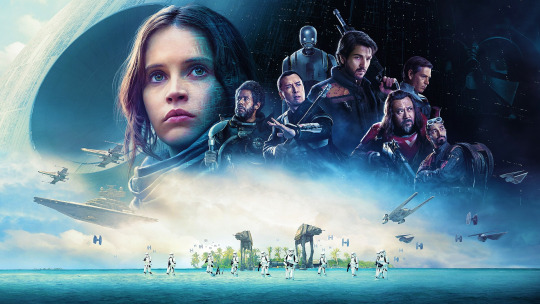
The second of the so-far released Star Wars films released by Lucasfilm since Disney’s heralding of the franchise is also the weakest. Rogue One: A Star Wars Story represents the first live action, theatrically released film in the Galaxy Far, Far Away that centers itself outside of the main Skywalker saga. It styles itself as both a prequel and spin-off and strikes out to capture some of the genre-bending style that has been Marvel Studios’s secret success. Telling the story of the theft of the Death Star plans, director Gareth Edwards styles Rogue One as a science fiction war epic filled with intense battle sequences and clever camera work.
When Rogue One is at war, the film is a success. Edwards’s strong visual eye, especially when detailing scope and scale, is the movie’s true secret weapon. Rogue One is a gorgeous film to look at and more so than The Force Awakens finds a way to inhabit the aesthetic of the Original Trilogy while also updating it for a contemporary audience. The blending of practical and digital effects is close to seamless (outside of the infamous digital recreations of Peter Cushing and Carrie Fisher). As an extension, the battle sequences whether they be urban shootouts in the ancient city of Jedha, storming the beaches of Scarif, or capital ships crashing into one another in high atmosphere, are stunning to behold and perfectly capture the chaos but also emotion of galactic warfare.
Similarly, when Rogue One functions as an allegory for the battles of oppressed people against fascist or totalitarian governments it is effectively stirring and even emotional. Sacrifice for freedom is a key theme of the franchise and Edwards and screenwriters Chris Weitz, Tony Gilroy, John Knoll, and Gary Whitta are keenly aware of this.
It is unfortunate then that so much of Rogue One is so starkly impersonal and flat. Throughout the film’s runtime there is an undeniable texture of ideas and concept that are intriguing. There are different political factions, sub-cultures that have clear beliefs and unique meanings to the franchise, and characters that are well drawn and conceptualized. These ideas just often feel untouchable or nebulously realized.
Nowhere is this more apparent than in the film’s central cast of characters. While the ensemble of talented actors do their strongest to bring these rebels to life, many struggle to stretch beyond their initial drawings or conceptualizations. Few outside of the film’s lead, Jyn Erso, possess much of a clear character arc or personal stake in the proceedings, but even those that do experience some form of personal realization do so in a stop gap manner that is hard to follow. At its most basic, Rogue One’s characters lack agency; their wants and desires feel removed from the central thrust of the plot and instead feel like game pieces moved about for a larger force. While this may have been done as a way to ape grunt work in military campaigns, there is still a storied history of war films that explore the personal and human side of battle, especially when the war concerns struggles of freedom against totalitarianism. Diego Luna’s Cassian Andor may hint at a lifelong history of war and trauma, but we don’t see how this shapes him as a human or why he comes to realize that this has harmed him in the third act. It says something that the most iconic scene in the film concerns a cameo from a villain from a more successful movie. As a result, Rogue One functions as a series of beautifully executed set pieces and ideas, but is told through an emotional distance and relative lack of humanity.
Score: B-
7. Star Wars Episode III: Revenge of the Sith (2005)
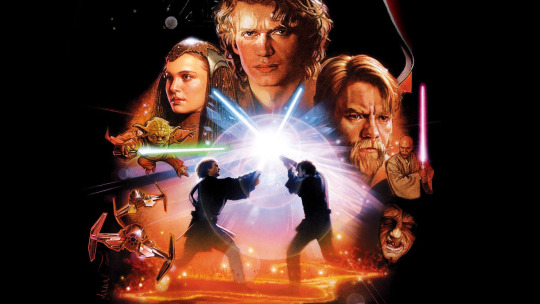
While it is not flawless, it is refreshing to see the franchise reorient itself so strongly during the closing act of the prequel trilogy. Revenge of the Sith is a film that blends mythos and character and at its best does both rather well.
At its worst, Revenge of the Sith recommits the sins of its predecessors. Hayden Christensen, while as a whole is significantly better than his previous take on the character, still has his moments of woodenness and has a proclivity for overly heightened melodrama. Lucas’s script also continues to struggle in providing dialogue, particularly in romantic scenes, that feels human often resulting in stilted and even sometimes nonsensical phrasings. Overall, there is something also strangely off about the tone in Revenge of the Sith which changes from relatively fun and light hearted space adventure to dark and brooding tragedy often times rather close to each other.
Similarly, there is a staleness to how much of the dialogue in the film is directed with characters frequently aimlessly wandering around rooms without clear purpose or urgency. As the stakes of the film rise this sort of detached storytelling becomes more and more distracting, but it is likely not enough to overpower what does work.
Anakin’s eventual fall from grace and the rise of the Galactic Empire carry with them a great sense of dramatic and mythological weight, even if the transition from conflicted Jedi Knight into child murderer does feel a tad rushed. The fact of the matter is, Revenge of the Sith knows how to play into its subject matter. Its story is appropriately weighty and once Grievous falls and Sidious makes his masterstroke the film evolves into some of the most consistently entertaining and weighty material in the saga, easily surpassing its predecessors in the prequels.
While it has come under fire recently for its apparent decision to select spectacle over emotion, the final confrontation between Anakin and Obi-Wan still remains some of the most intense and emotional stuff the series has seen. Its dancelike and kinetic fight choreography coupled with John Williams’s haunting score commands attention and leaves dozens of striking images in the viewer’s brain.
However, it is ultimately Ian McDiarmid performance as Palpatine/Darth Sidious that really makes Revenge of the Sith special. McDiarmid knows how to sell the myth and lore of Star Wars with nuance and restraint while at the same time is not afraid to embrace the hammy and ridiculous side of his character as well. Whenever he is on screen, he owns every second of it and he makes the film equal parts entertaining and haunting.
Score: B
6. Solo: A Star Wars Story (2018)
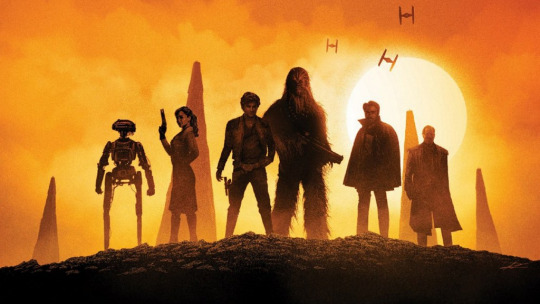
The very concept of Solo was a hard sell. As beloved as a character Han Solo is, few were clamoring to see a movie exploring the smuggler’s early days and the concept of any actor inhabiting the role of that helped make Harrison Ford a household name was enough to make fans call blasphemy. Given these concerns and the fact that directors Phil Lord and Chris Miller were fired mid production and replaced by Ron Howard , it is a wonder that Solo works at all. This is not to say that there aren’t bumpy sequences or clear moments of clashing creative vision, but the resulting film is one that evolves into an enjoyable adventure despite it becoming infamous for being Star Wars’ biggest financial flop.
Solo aims to capture a Saturday matinee energy that plays well into Star Wars’ roots but doesn’t shoot for the mythological grandeur of some of its best entries. Much of this has to do with the fact that Howard and Kasdan, along with his son and co-writer Jon, keep the film mired in the muck and grime of the galactic underworld. The result builds upon elements of Star Wars media that have never been given the forefront of a feature film until now. It makes for a unique feeling movie that carries an aesthetic of its own but still feels a part of the larger saga.
It is in the smaller moments of heists and robberies and double crossing where Solo leans into its western/crime film roots that the movie proves to be the most thrilling and successful. While the fate of many of its players are known, Solo does an admirable job of keeping motivations shifting and fluid but never unclear and this is captured by some solid performances at its center.
Despite the mountains of criticism and skepticism hurled his way, Ehrenreich does a commendable job of making the role of Han Solo his own. While clearly based in the mannerisms of Ford’s iconic take, Ehrenreich brings his own level of charm and swagger to Han that it is easy to appreciate him as his own character while also not losing sight of the legacy.
The true scene stealers, as most audiences likely expected, prove to be Donald Glover’s Lando Calrissian and his droid partner L3-37, played by Phoebe Waller-Bridge. Glover’s casting was lauded since it was first announced and it is a pleasure to see that he lives up to the hype. He plays the smooth talking gambler with the sort of duplicitous charm and arrogance that made Billy Dee Williams’s first appearance in The Empire Strikes Back so instantly classic. Calrissian is a clear crowd pleaser on and off screen and it makes every scene he is a part of magnetic and entertaining.
However, despite all of this, Solo is more concerned with telling a story of origins and smaller scale spectacle than it is picking apart what really makes the central smuggler tick. It’s passable entertainment without a whole lot going underneath the hood.
At the end, perhaps the biggest sin that Solo commits is that it fails to justify the purpose for its existence. This isn’t a film that audiences were clamoring for or that the franchise is necessarily improved by for having. However, unlike other origin stories, it plays with the legacy of its larger than life toys without tarnishing them. It takes them for a ride that is frequently fun and often filled with smart creative choices but can’t help but feeling disposable. It’s the Star Wars movie that inspires the least amount of emotion, one way or another, and is likely to remain a franchise footnote for sometime.
Score: B
5. Star Wars Episode VI: Return of the Jedi (1983)
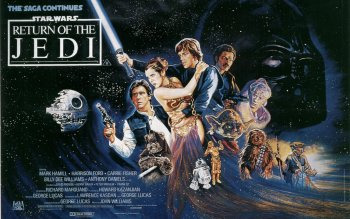
Despite containing some of the most iconic and even emotional content of the series, there is something oddly stale about Return of the Jedi. It still is a consistently entertaining and engaging film, but in comparison to the two masterworks that proceeded it, something feels off.
Some of this might simply be due to the abundance of slapstick humor, the ill-fitting Ewoks, or any number of frequently cited issues with the presentation and script such as an overly long sojourn to Jabba’s Palace on Tatooine. (I do love the Errol Flynn/Flash Gordon style set piece above the Sarlacc pit all the same.) However, perhaps the most unfortunate aspect about Return of the Jedi is simply the fact that two of its principal characters are played by actors who simply do not seem to want to be a part of the film. Both Carrie Fisher and Harrison Ford turn in performances that are competent in their own right, but at the same time are a far cry from their work in both preceding films in the original trilogy. A particular exchange between the famous smuggler and princess on a balcony in an Ewok village contains some of the most forced dialogue and line delivery in the saga and it’s more than a tad distracting and disappointing.
Richard Marquand’s direction also feels relatively bland and perfunctory after the creative abundance that George Lucas and Irvin Kershner brought to the prior films. It handles the scale and action of it all competently enough, but the whipsnap editing of A New Hope or the inventive cinematography of The Empire Strikes Back are missing. It stands as one of the blandest looking films in the saga as a result.
However, Return of the Jedi progresses the narrative momentum from both previous films into an incredible three part climax that is thrilling and compelling. Whether it is the sublimely ahead of its time space battle between the scattered rebel fleet and the Imperial war machine or the final temptation of Luke Skywalker by the Emperor, Return of the Jedi draws the viewer into its dense dramatic landscape and rarely lets up. Yes, even the relative silliness and levity of the Ewok forest battle even makes for some amusing breaks of the heavy material surrounding it.
What ultimately elevates Return of the Jedi above most of the rest of the Star Wars franchise is its beautiful conclusion to the central drama of the Skywalker family saga. Mark Hamill and Ian McDiarmid are arguably the two strongest actors in the original six Star Wars films and seeing both paragons of light and dark play off one another in such a way is a rare treat that bursts with scenery chewing pathos. The tempting of Luke through family and eventually Vader’s redemption through love for his son is a beautiful thematic tableau. Vader’s slaying of his Master and his gradual death bed re-transformation into Anakin Skywalker makes for the most emotional sequences in the series. Regardless of the tragedy that has brought the series to this point, Return of the Jedi ends on a moment of unabashed peace and unity and it’s both serene and appropriately celebratory. Whether you are a “Yub Nub” fan or a fan of the Special Edition’s galactic victory revelry (I’m the latter), it is hard not to smile as our heroes embrace one another and an old generation sees its sins rectified. Score: B+
4. Star Wars Episode VIII: The Last Jedi (2017)

There is a certain strangeness to The Last Jedi. While many criticized The Force Awakens for being overly reverential of its predecessors at the cost of a unique narrative, director and writer Rian Johnson takes the franchise to its almost breaking point limit in the series’ eighth numbered installment. Whether it be through its atypical narrative structure, franchise first visual cues, abundant humor, or the frequent breaks from expectation, The Last Jedi is a different form of Star Wars film than we are used to. The Last Jedi takes risks, and while not all of them may payoff, it is to be commended that it takes them in the first place. It’s a movie that has something to say and something worthy as well, and in an era of blockbusters that aim only to please and not challenge their viewers, it’s certainly an appreciated move.
After sitting out almost the entirety of The Force Awakens, Mark Hamill finally receives the opportunity to dig back into the most iconic role of his career and to one of the most beloved heroes in a generation. One of the smartest twists in Johnson’s script comes with the playing of expectations for this. Luke is a broken man and has become that way for a reason. In particular, The Last Jedi continues the Sequel Trilogy’s smart meta-narrative. These films, perhaps more so than any other set of Star Wars media, are keenly aware of the legacy in which they play and it factors into the narrative. Within the Galaxy Far, Far Away and in real life, the characters of Luke, Leia, Han, and, even, Darth Vader have become legends. Johnson crafts a Luke that is cracking under the pressure of the legacy, but in the process creates a strong message on the importance of heroes and what they can mean to the downtrodden and a society in turmoil. It makes for one of the film’s strongest through points and this is done in no small part due to Hamill’s terrific performance. Hamill not only finds a wonderful balance in updating his iconic character to a new era of his life, but by balancing measures of sorrow, anger, and grumpy humor. It’s a move that has proved infamously divisive to both viewers and to Hamill himself, but the end result, especially in an outstanding move in the film’s third act, is pure Star Wars magic.
Paired with Luke is the still lost Rey. Daisy Ridley utilizes this confusion and frustration to craft a heroine that is at an emotional crossroads. While her determination and passion from The Force Awakens still rings through, Rey this time brings with her a strong sense of vulnerability and confusion and it makes for a harrowing character arc that is made all the better for its pairing with Kylo Ren. They see similarities in their shared frustrations and confusion, but they are still two people who are fundamentally separated on the bound of morality. As a result, Adam Driver continues to craft Kylo Ren into one of the franchise’s most successful villains. While he lacks the campy sneer of Palpatine or the undeniable dramatic gravitas of Dart Vader, Driver’s Kylo is marked by his unpredictability and instability. As a result, he’s a villain that feels disturbingly human and volatile and it makes each scene he is a part of particularly fascinating. All of this pays off in a stellar throne room confrontation between Kylo, Rey, and Andy Serkis’s Supreme Leader Snoke that marks the film’s clear action highlight.
The greatest failing of The Last Jedi ultimately comes from a middle act that at times feels aimless and overly cluttered. There are numerous moving parts and an extensive ensemble cast that branches off to multiple locations and teams. It’s inevitable that one story will feel lost in the shuffle and that, unfortunately, comes down to Finn and Rose. John Boyega and Kelly Marie Tran as a general rule are a joy to watch. Boyega carries the same enthusiasm and excitement that made him so infectious in The Force Awakes and Tran is inspirational in her quiet moments of grief and casual heroics. However, the lengthy sequence on Canto Bight including a less than inspired chase sequence feels like the film at its most aimless. At a point where all three major narratives feel stalled, it is the Canto Bight section that feels the most distracted and disinterested despite the stellar design work at hand. It’s unfortunate in that this holds back the pacing of the film but squanders a potentially strong story for two of the film’s leads, one of which was one of the standouts of its predecessor. Luckily, Poe Dameron does end up getting the spotlight and his desperate story of responsibility plays out like a tense piece of military science fiction and is one of the unsung highlights of the film.
Even when it isn’t sticking the landing, Johnson’s script still moves with intention of both theme and character. Lessons regarding failure, myth, personal growth, and courage are abundant and each of the central five characters feels like they have a clear arc and goal achieved by the end of the film, despite some of them not always being the most entertaining to watch or taking priority over others.
Combined with some beautiful imagery, a freewheeling and dynamic musical score by John Williams, and fantastic final act that is simultaneously moving and fist pumpingly fun, The Last Jedi is some of Star Wars at its best. It’s willingness to upend conventions and take risks is likely to irk some fans until the end of time, but there is genuine magic here and it ages better with each passing year.
Score: A-
3. Star Wars Episode VII: The Force Awakens (2015)
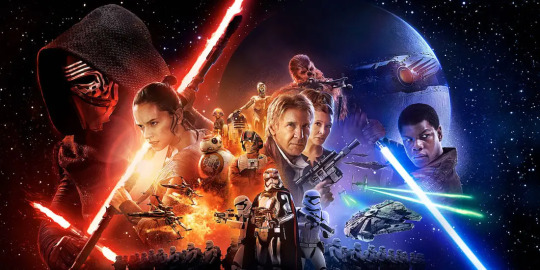
Director JJ Abrams and co-writer Lawrence Kasdan stated that the one emotion they wished to elicit in audiences while viewing The Force Awakens was delight. In that they delivered in spades. While the film may tread into some dark and even tragic material, what The Force Awakens does first and foremost is return a sense of fun, adventure, and character to Star Wars’ presence in the world. It makes for a breathless, endearing, and entirely involving viewing experience that only manages to win one over with each consecutive watch.
Much of this is due to the embarrassingly talented and engaging ensemble cast assembled in the film. Not since The Empire Strikes Back has a Star Wars film been this densely populated with genuinely relatable, exciting, and intriguing characters. It’s what makes the movie breathe, live, and thrive and in the process turns it into premium blockbuster entertainment and one of the finest installments in the series to date.
Daisy Ridley’s Rey easily finds herself fitting into the archetype of a loner elevated from poverty into extraordinary circumstances. She makes for the sort of every woman that made the original Star Wars narrative so appealing and was lacking from the prequel trilogy as a whole with maybe the exception of a childhood Anakin. In contrast, John Boyega’s Finn is a boundless source of energy, outward conflict, and humor. Boyega is about as charismatic and energetic character as the franchise has ever had. From his first traumatic introduction through the eventual end of his journey, Finn’s struggle for purpose and arguably redemption adds a level of unpredictability but also flawed humanism. Boyega clearly has a large amount of affection not only for the role but for the film and the universe itself. It’s hard not to fall in love with Finn from the second he appears on screen. Pairing off with him is Oscar Isaac’s underutilized by seductively charming hot shot pilot, Poe Dameron. Isaac owns every scene he is a part of with each spin of his fighter, smirk, and cheer.
Opposing the trinity is Adam Driver’s Kylo Ren, whom Abram’s and Kasdan craft into a fractured and unstable meta-symbol of legacy and male fragility. It turns Kylo into an entertaining and uniquely frightening villain that is not sympathetic, but understandably human. It makes the character’s slips towards the Dark scarier in their closeness to real world insecurity. This is not a fall of mythic proportions such as Anakin but one instead fueled by uncomfortably familiar emotion.
Of the returning cast members, Harrison Ford not only turns in his best take on the galaxy’s most notorious smuggler since The Empire Strikes Back but arguably his most lively and enjoyable performance in over a decade. Like much of the cast, Ford seems to be enjoying the role and luckily, unlike Return of the Jedi, he seems to have found what makes the character of Han Solo not only fun but interesting and human. The same can be said for Carrie Fisher as Leia Organa. Fisher has not lost her ability to appear both emotionally torn but also commanding at one moment, and she, like Ford, effortlessly slips back into her old role.
As it is most likely clear by this point, The Force Awakens is a film that thrives by its incredible cast of characters. Star Wars at its best is a series that works best when the mythology, despite how compelling it may be, takes a back seat to the human, robotic, and alien beings at its center. This proves doubly the case for The Force Awakens. While its central plot mostly serves as a means by which to challenge, test, and reveal its characters, it also functions as one of the most structurally weak points of the movie. Those familiar with A New Hope will find a fair share of structural similarities with the beginnings of both trilogies. Most of these center around the mostly ill-advised inclusion of Starkiller base, a third string Death Star that functions as little more than a staging ground for the film’s final act. However, while this overt reverence for the past can prove distracting and unwarranted, it does not prove as detrimental to the film as a whole as some critics and fans have claimed since its release in 2015.
Score: A
2. Star Wars Episode IV: A New Hope (1977)
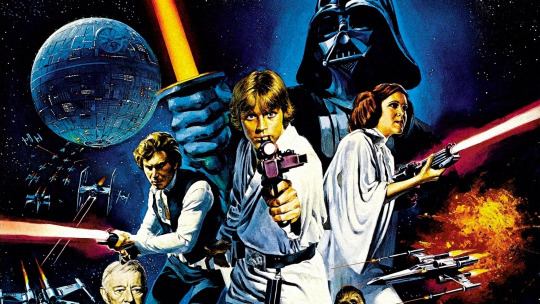
Viewing Star Wars, or A New Hope, is almost an exercise in examining an indelible piece of pop culture history as much as viewing a movie. It is hard to overstate just how drastically this film has shaped the world and cinematic culture since it was first released to record breaking crowds in 1977. While it may seem inconsequential when viewed in the pure breadth and scope of the behemoth franchise that it has spawned in the 40 years since its premiere, A New Hope laid the groundwork for one of the most enduring pieces of science-fiction/fantasy in the world all the while telling a uniquely entertaining and compelling movie in its own right.
As its own artifact, A New Hope is this strange sort of mad genius cooked up within George Lucas’s often baffling but uniquely talented creative space. The sheer amount of consequential but essential world and character building that A New Hope carries within its opening act is a gargantuan feat and it does so with the same sort of on-the-nose optimism and sense of adventure that pervades the entirety of the picture. Whether it’s the thrilling opening clash between Leia’s rebellion and the Empire or through Obi-Wan’s melancholy explanation of the history of the Jedi to an eager Luke Skywalker, Lucas’s script is busy crafting a myth and its one that’s worth listening to.
A New Hope’s secret success has always been its distillation of the hero’s journey into a unique narrative. Lucas imbues his take on this classic storytelling trope with his own creative flourishes and iconic imagery: the long arm of the Empire represented as the never ending Star Destroyer filling the screen, Luke’s desire for adventure represented as an almost self-imposed prison in his aunt and uncle’s farm before it is torn away from him, and of course the cantina that represents the steps into a larger new world filled with oddities and danger. A New Hope’s iconography is memorable and steeped into pop cultural memory for a reason.
In terms of performances, outside of Alec Guinness’s stoic but appropriately haunted Obi-Wan Kenobi and Peter Cushing’s deliciously twisted and sinister Grand Moff Tarkin, A New Hope functions moreso as a stepping stone for future development than an acting showcase. This is not to say that the acting is poor. Mark Hamill’s Luke Skywalker is impatient and impetuous, but he serves as a more than adequate focal point for the film’s young audience. Harrison Ford’s Han Solo may not yet be the cocky romantic that audience’s will come to love him for, but his devil-may-care swagger makes for a magnetic secondary protagonist. Carrie Fisher is given relatively little to do here, but right off the bat brings with her Leia’s brash confidence, knack for heroism, and utter impatience for those around for her who are holding her back from her mission.
Above all, A New Hope is simply a joy to watch. It’s buoyed by an infectious sense of wonder, adventure, and optimism while at the same time hiding a hints of tragedy and even canny political awareness. It’s an appropriate blockbuster for the ages and likely will feel its legacy stretch out for decades to come. Score: A+
1. Star Wars Episode V: The Empire Strikes Back (1980)

If A New Hope was the film that laid the foundation of what Star Wars could become, The Empire Strikes Back is the movie that catapulted the series from creatively executed novelty into myth. Director Irvin Kershner and writers Leigh Brackett (to this day the only woman to write for a Star Wars feature) and eventual franchise regular Lawrence Kasdan escalates George Lucas’s original story of a hero’s journey into a layered, philosophical, and beautifully realized story of character and familial drama.
What sets Kershner apart from Lucas from the start is his sinister and almost dreamlike visual style that pervades throughout the film. To this day, The Empire Strikes Back makes for the most visually evocative film in the franchise with its dizzying moments of space flight, incredible battle over the snow drifts of Hoth, majestic and appropriately hazy skies of Bespin/Cloud City, and of course eerie and murky swamps of Dagobah. Kershner establishes a smart language through the movie’s cinematography that reorients the franchise and its characters not only as more mature beings but those that are battling their own struggles of aging and adulthood.
Appropriately, The Empire Strikes Back is a story of growing up and challenging its central cast. Luke discovers that his path to adventure leads not to one of heroism and uncovered legacies but to an inheritance that is tempered with trials and a dark and tragic family legacy. Leia finds her attempts to guide a galactic rebellion clouded by her own personal feelings. Han Solo can’t bring himself to leave because he has discovered that he is maybe addicted to heroism but is also hopelessly in love with the princess at the war’s center. Kasdan and Brackett move these characters into scenarios that routinely challenge them and in the process mines series, and even career, high performances from all involved. Harrison Ford in particular is both a dashing romantic while also remaining a cocky and oddly insecure criminal.
Similarly, while A New Hope may have established Star Wars as a cultural icon, it is The Empire Strikes Back that has left its indelible mark on the franchise as a whole. Whether through the development of the Empire into a multifaceted fascist machine spanning worlds and star systems, introducing the Force as a mystical and philosophical belief system more in tune with Buddhist and Hindu spirituality than as a magical tool through the instantly iconic character of Yoda. (Frank Oz is one of the unsung performing heroes of this series), having Billy Dee William’s bring a sense of moral ambiguity but also undeniable cool to the franchise with Lando Calrissian, or John Williams’s most mature and instantly iconic score of the franchise, The Empire Strikes Back inspires more iconic Star Wars elements than one often realizes.
However, what the central piece that draws the entire film together into pure classic territory is the onyx clad Sith Lord at its center. While Darth Vader carried a presence throughout the previous film, James Earl Jones and the general creative team in Empire establish the character as not only a sinister force to be reckoned with but one with a twisted sense of humor and a dark personal pathos. It solidifies the character as one of the most, if not the most, iconic villain in film history.
The Empire Strikes Back is a triumph. It is intelligently engaging, artistically realized, beautifully acted, and at the same time strikingly funny and entertaining. It is and likely always will be the zenith of Star Wars entertainment. I doubt anything will ever top it.
Score: A+ ----------------------------- So how did I do? Agree? Disagree? Let me know.
#Star Wars#review#reviews#A New Hope#The Phantom Menace#Attack of the Clones#The Clone Wars#Clone Wars#Star Wars: The Clone Wars#Revenge of the Sith#Solo#Solo: A Star Wars Story#Rogue One: A Star Wars Story#Rogue One#The Empire Strikes Back#Return of the Jedi#The Force Awakens#The Last Jedi
0 notes
Text
Top 10 Video Game Sidekicks
Modern day gaming is a much more collaborative experience, geared towards often fast-paced, multiplayer or co-operative gameplay, whether you like it or not the days of the story mode is in it’s twilight with many of the bigger developers now opting to either forego the traditional single player experience or incorporating it into an overall online mode (see Destiny, Titanfall, Star Wars Battlefront) and while gamers have pushed back, there is no doubting that the further into the future we get, the more integrated we are.
But for many years, there have been characters who were designed to help you on your path and simulate that collaborative experience, some of which became beloved heroes of the gaming community and some, well, not so much (I personally still have nightmares about Natalya from Goldeneye and her casual stroll through a hail of AK-47 gunfire)
This article is dedicated to the characters that made the game a better experience, whether it be for gameplay or purely for the story, they live on with the legacy of each game on the list.
Dogmeat (Fallout)

The idea that dog is man’s best friend always seems to have been prevalent in everyday life but never has it been more important than in the post-apocalyptic world of Fallout.
Dogmeat would do anything to protect you, he would attack anyone or anything at anytime, he sniffs out valuable items that aid your survival in this unforgiving world, he will follow a scent for miles and he is your only remaining family, if that’s not enough to earn this dog a place on this list, then you obviously aren’t a dog person.
Cortana (Halo)

Cortana is the first blockbuster sidekick on this list that was introduced to the world in the incredibly successful Halo.
The supercomputer would assist you by hacking rogue alien systems, providing tactical assistance and decoding transmissions essential to your mission and gives Master Chief his only human link (ironic) in the entire game.
To put into perspective how successful this sidekick would become, she now resides on tens of millions of PC’s around the world as a virtual assistant that helps operate the Windows system, if that’s not a sign that you’ve been important, I don’t know what is.
Otacon (Metal Gear Solid)

‘’Snake, you of course know the saying ‘one for all, all for one’. It’s from ‘The Three Musketeers’ - the book, not the candy bar’’
In one of the most intense gaming series of all time, often with cut-scenes that were obscenely longer and more detailed than anything that had come before it or since, Otacon brought a lighter tone to the world of Metal Gear Solid.
With his often ill-timed explanations of totally random subjects (see pre-ripped jeans, daylight savings, Chinese proverbs) he became a cult favorite amongst hardcore MGS players, the fact that he used to help Snake through various missions with his codec updates is only an added bonus that gets him on this list.
Weighted Companion Cube (Portal)

‘‘It’s just an object..it doesn’t even do anything’’ said absolutely no one who has ever played Portal. This little cube was pretty much your only ally in the entire game, starting out as just a lump that you would use to hit switches or complete a puzzle it eventually became a friend (yes, I said a friend) and as the game presented more challenging obstacles it became invaluable.
Then came the incinerator, I struggle to think of anything else in pop culture that felt as crushing a blow for the loss of something that was not even alive in the first place (maybe Wilson from Castaway)
Godspeed trusted companion cube, we will meet again.
Yoshi (Super Mario World)

Step aside Luigi, because Yoshi is the one true sidekick to Mario.
First introduced in 1990, Yoshi first came about simply as a mode of transportation for the famous brothers but soon became very useful on their adventures. You could ride him (which was cool as hell anyway) you could sacrifice him to get over obstacles or just throw him away when he wasn’t needed, he would help you take care of those pesky enemies and I defy you to name any other sidekick that pooped out power-up’s at the rate he did.
He’s stuck with the series over the years and has even managed to get a few game’s of his own (Yoshi’s Island, Yoshi’s Story, Yoshi’s Wooly World to name a few) which is something that only one other character on this list has managed to accomplish, impressive.
Claptrap (Borderlands II)
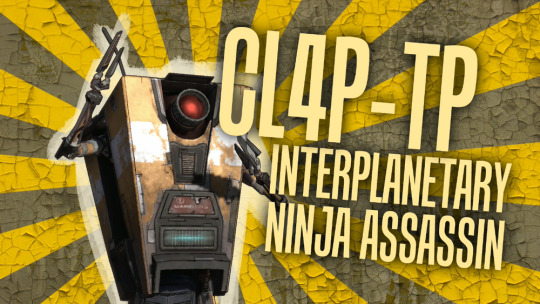
Let's be honest, usually when you have a sidekick whose main purpose is to provide comic relief it falls flat on its face, but in the world of Borderlands, it is exactly what you expect and what you need.
Despite the fact he raised an army and tried to kill you at the end of Borderlands, by the time you come across him in Borderlands II all is forgiven after a few minutes, mainly acting as a guide through the wastelands of Pandora, the game quite literally would not have been the same without him. Not just satisfied to be the life and soul of the party, Claptrap will also open doors for you and help you open those magical loot chests that you lust after.
Leonardo Da Vinci (Assassins Creed 2)
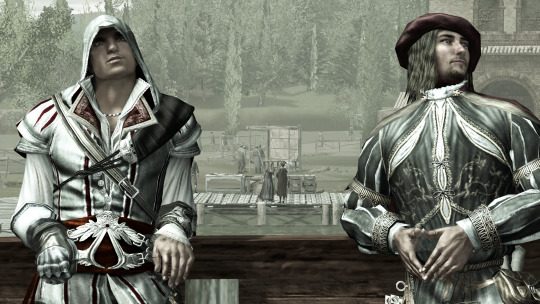
Assassins Creed 2 was an excellent game, ranking as either many gamers favorite of the franchise or most important, it overhauled the game mechanics from the original which had been hailed as a storytelling master stroke, but showcased cumbersome climbing and fighting physics that often made the game feel like a chore, it’s hard to put into words just how much this installment lit a fire under the series that has since become a juggernaut, reaching as far as Hollywood.
Among the riveting missions, the outlandish, often villainous supporting characters and mysterious storyline set in the various visually stunning cities of Italy, you had the chance to meet the one and only Leonardo Da Vinci.
At first you’re excited about how he fits into the narrative of the story but when you realize that he’s building you item’s that the game hasn’t presented to you before, the real fun starts. First, there was the hidden blade, he then introduced you to some new fighting techniques, which in a game like Assassins Creed is very important to keep things fresh, along with the ability to poison enemies (honestly, is there anything more satisfying than poisoning just one guard in a group and seeing him go crazy? no) but this all lead up to arguably the best mission of the game in sequence 8...WHERE YOU FLY OVER THE ROOFTOPS OF VENICE IN A GIANT DAMN WOODEN BIRD!
Tails (Sonic Series)

There may be no more important entry into this list than Tails. In 1992 when the beloved character was first introduced, gaming culture was still in its relative infancy on the mass market and was about to take a big upward swing over the next few years and Sonic The Hedgehog would play a major role in its development.
Sonic would become one of the most popular games on the Sega mega drive and its marquee title, with its addictive side scrolling action and it’s fast-paced boss fights, it was in the rarefied atmosphere only shared by Super Mario Bros at the absolute crux of the gaming community, but where Mario had his trusty Luigi, Tails would be a more useful sidekick to Sonic, his power of flight would occasionally be invaluable for successfully completing a level and without him, there would be no biplane to take down Dr. Eggman’s wing fortress.
I’m sure anyone reading this article who had a younger sibling and had to share a mega drive would also agree, Tails is the best!
Ellie (Last Of Us)

Although being a playable character later on in the game and spawning a spin off (Left Behind) there could have been no list without the incomparable Ellie from The Last Of Us.
This is widely regarded now as the greatest video game of all time and the character of Ellie provides a huge reason for this, as you navigate the post-apocalyptic world following an outbreak that ravages the United States, you lose your family and your hope for a new humanity until you are introduced to Ellie, the 14-year old girl who could potentially hold the fate of humanity inside her.
A connection with any character in a video game this intense is incredibly rare as she becomes increasingly important, not just to the story but to you as the player and explains the mixed emotions at the end when Joel would essentially rather see the human race die then have Ellie taken away from him, totally fair in my books.
Elizabeth (Bioshock Infinite)
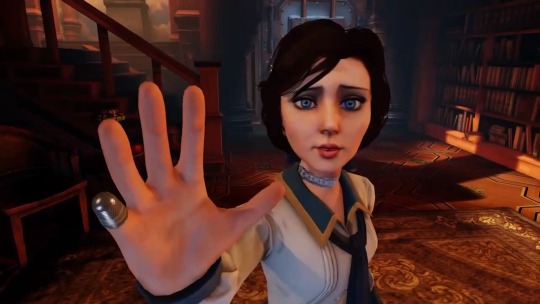
The best AI sidekick of all time? I would say so.
Bioshock has always been an immersive story-driven experience, through the underwater steampunk world of Rapture featured in the first 2 installments, gamer’s were presented an extremely dark, often terrifying experience as we learned to deal with the psychopathic enemies that lurked in the shadows, by the time Bioshock:Infinite was released, we were ready to ascend to the clouds of Columbia.
Often times, ’escort’ missions in video games are incredibly tedious so if I were to tell you that Infinite is basically one, long escort mission, many would simply not bother playing it but Elizabeth proves to be the most helpful and one of the most interesting sidekicks in video game history.
She keeps herself out of the way of danger, she tosses you supplies and ammunition when it’s needed most, she can find money and open locked doors and if you played the game on the hardest difficulty like me, she is absolutely necessary.
I can still say to this day that the feeling of accomplishment I had upon completing Infinite is unparalleled and Elizabeth is the very definition of what a video game sidekick should be.
0 notes
Text
Pierrot and Harlequin, Mardi Gras by Paul Cézanne, 1888
Origins
Atellana comedy
Plautus
Passion Plays
Arlecchino, as we know him, is a stock character dating back to seventeenth-century Commedia dell’arte. He also has origins in the atellana farce of Roman antiquity (4th century BCE). In fact, the use of stock characters is a feature of the atellana. Moreover Commedia dell’arte characters could be borrowed from commedia erudita. Molière‘s (1622 – 1673) Miser or L’Avare (1668) was borrowed from Plautus‘ (c. 254 – 184 BCE) Auluraria (The Pot of Gold).
However, in European countries, comedy has more immediate origins. It emerged as a brief mirthful form, a mere interlude, during lengthy medieval Passion Plays, Mystery Plays and Miracle Plays. Passion Plays were extremely long, so interludes, comedy, were inserted between the “acts” to keep the audience entertained. These became popular and eventually secularized the religious plays. However, Passion Plays have not disappeared totally. For instance, the Oberammergau Passion Play (Bavaria) has been performed since 1634, keeping alive the birthplace of farces and tom-foolery.
Harlequin
Hellequin, Herla, Elking
Tirstano Martinelli, the first Harlequin
Zanni (servants)
British harlequinades (eighteenth-century)
It would appear that the commedia dell’arte’s Arlecchino (Harlequin) was also culled out of Passion Plays, where he was a devil: Hellequin, Herla, Erlking and other spellings and names. The origin of the name is attested by 11th-century chronicler Orderic Vitalis (1075 – c. 1142). The name Harlequin was picked up in France by Tristano Martinelli, the first actor to play Harlequin. (See Harlequin, Wikipedia.)[i] Tristano played the role of Harlequin from the 1580s until his death in 1630. At this point, Harlequin became a stock character, an archetype, in the Commedia dell’arte. Given that the success of the Commedia dell’arte performances depended on an actor’s skills, we can presume Tristano was a fine comedian.
Arlecchino (Arlequin, Harlequin) is a zanno, a servant whose function was called Sannio in the Atellana, Roman farcical comedies. There were many zanni, (Brighella, Pulchinello, Mezzetin, Truffadino, Beltrame, and others). Their role was to help the young lovers of comedy overcome obstacles to their marriage. This plot is consistent with the “all’s well that ends well” of all comedies. We have already met the blocking characters of the commedia dell’arte. Pantalone is the foremost. But his role may be played by Il Dottore, or Il Capitano, or some other figure.
Although a zanno has the same function from play to play, as do blocking characters, the alazôn, zanni otherwise differ from one another. For instance, Arlecchino, a zanno, is different from Pierrot. Harlequin is not the growingly sadder clown of Romantic and pantomimic incarnations. He is not Jean-Gaspard Deburau‘s Battiste, nor is he Jean-Louis Barrault‘s Baptiste. He is the clever, nimble, but clownish zanno.
Harlequin’s Characteristics
Arlecchino is, in fact, the most astute and nimble of zanni or servants. He is an acrobat. This is one of his main attributes. Moreover, he wears a costume of his own, another distinguishing factor.
At first, the Harlequin wore a black half mask and a somewhat loose costume on which diamond-shaped coloured patches had been sewn. He would then wear a tight-fitting chequered costume mixing two or several colours. Paul Cézanne‘s (1839–1906) Harlequin is dressed in black and red, but Pablo Picasso changes the colours worn by his numerous Harlequins.
Harlequin leaning (Harlequin accoudé) by Picasso, 1901
Les Deux Saltimbanques (Two Acrobats) by Picasso, 1901
Arlequin’s Progress
the sixteenth and seventeenth centuries in France
Blois
I Gelosi
Petit-Bourbon
Scenario
In the sixteenth and seventeenth centuries, the Italians were very popular at the French court and so was Harlequin. As of 1570-71, Commedia dell’arte actors were summoned by the King of France to perform in royal residences. In 1577, the Italians were called to Blois by Henri III during an assembly of Parliament. The famous I Gelosi (The Jealous Ones; 1569-1604) “was the first troupe to be patronized by nobility: in 1574 and 1577 they performed for the king of France.” (See I Gelosi, Wikipedia.) La Commedia dell’arte most famous performers in seventeenth-century France were Isabella and Francesco Andreini. Isabella died in childbirth (1604), but her son’s troupe, the Compagnia dei Fedeli would be invited to perform at Louis XIII’s court.
In short, in the seventeenth century, Harlequin was in France. In fact, at one point, les Italiens shared quarters with Molière at the Petit-Bourbon, a theatre. Matters changed in 1697, when the commedia performed a “fausse prude” (false prude) scenario that offended Madame de Maintenon (27 November 1635 – 15 April 1719), Louis XIV‘s second wife. In French seventeenth-century representations, Pierrot loved Columbine who loved Harlequin (Arlecchino).
Commedia dell’arte troupe, probably depicting Isabella Andreini and the Compagnia dei Gelosi, oil painting by unknown artist, c. 1580; in the Musée Carnavalet, Paris (Photo credit: Britannica)
Pulcinella, by Maurice Sand
John Rich, as Harlequin
British Harlequinades: Pantomime & Slapstick
pantomime
slapstick
Pulcinella (Polichinelle, Punchinella)
“Punch and Judy”
a new scenario
In eighteenth-century Britain, John Rich[ii] (1682 – 26 November 1761, the son of one of the owners of Drury Lane Theatre and the founder of Covent Garden Theatre (Royal Opera House) performed the above-mentioned harlequinades in which “he combined a classical fable with a grotesque story in Commedia dell’arte style involving Harlequin and his beloved Columbine.”[iii] In Britain, harlequinades, became “that part of a pantomime in which the Harlequin and clown play the principal parts.”[iv] Harlequinades also contained a Transformation Scene.[v] Associated with the British Harlequin are pantomime, slapstick comedy and puppetry. Yet, this British Harlequin is rooted in the sixteenth-century Commedia dell’arte. It seems that the best of these English clowns was played by Joseph Grimaldi (18 December 1778 – 31 May 1837).
However, British harlequinades also featured Pulcinella who originated in the seventeenth-century Commedia dell’arte but had roots in Atellana comedy and was a stock character in Neapolitan puppetry. Given his ancestry, Pulcinella could and did inspire Mister Punch of “Punch and Judy,” a puppet show. (See Harlequin, Wikipedia.)
British harlequinades differ from continental versions of Arlequin (FR) or Arlecchino.
“First, instead of being a rogue, Harlequin became the central figure and romantic lead. Secondly, the characters did not speak; this was because of the large number of French performers who played in London, following the suppression of unlicensed theatres in Paris.” (See Harlequin, Wikipedia.)
It seems harlequinades were played in “Italian Night Scenes,�� following a main and serious performance. In their scenario, “Italian Night Scenes” focused on Harlequin who loved Columbine but was opposed by a greedy Pantalone, Columbine’s father. Pantalone would chase the young lovers “in league with the mischievous Clown; and the servant, Pierrot, usually involving chaotic chase scenes with a policeman.” Moreover the “night scenes” started to grow longer to the detriment of the previous performance. (See Harlequinade, Wikipedia.)
In other words, in Britain, Harlequin out-clowned Pierrot. As for Pulcinella, although he had appeared, he could not out-clown Harlequin. Furthermore Pulcinella grew into Punch (Punchinella) and, as mentioned above, he migrated to the land of puppetry. But above all, British harlequinades were hilarious: genuine slapstick. Moreover they were pantomimic as would be Jean-Gaspard Debureau‘s (Battiste) as well as Jean-Louis Barrault‘s (Baptiste). Baptiste is nimble and precise, but in England, the chaotic “chase” had begun. The last harlequinade was played in 1939.
The Ballets Russes, Stravinsky, Picasso
Sergei Diaghilev‘s enormously successful Ballets Russes were inspired by the commedia dell’arte. Diaghilev commissioned a ballet version of Pulcinella, composed by Igor Stravinsky and choreographed by Russian-born Léonide Massine. Furthermore, Pablo Picasso, who had already painted characters from the Commedia dell’arte, Harlequin in particular, designed the original costumes and sets for the ballet (1920).
Harlequin and other members of the Commedia are associated with Pierre de Marivaux (4 February 1688 – 12 February 1763). Marivaux wrote many plays for the Comédie-Française and the Comédie-Italienne. But we are skipping Marivaux’s polished Arlequin because the discussion would be too long and too complex. We will instead look at images, Picasso’s in particular, and provide the names of innamorati, lazzi and zanni, but that will be my last post on the Commedia dell’ arte itself.
My best regards to all of you.
Colombine
Arlequin poli par l’amour, Marivaux
RELATED ARTICLES
Leo Rauth’s “fin de siècle” Pierrot (27 June 2014)
Pantalone: la Commedia dell’arte (20 June 2014)
Sources and Resources
Commedia dell’arte (shane-arts)
Development of Pantomime (The)
Harlequin everywhere you look (thoughtsontheatre)
Masques et bouffons (comédie italienne), 1860. (See Maurice Sand, in Wikipedia.) Maurice Sand’s book is available online at Masques et bouffons (comédie italienne)
Marivaux’s Arlequin poli par l’amour (EN)
____________________
[i] “Arlecchino,” Phyliss Hartnoll, ed. The Oxford Companion to the Theatre, 3rd edition (Oxford University Press, 1967 [1951])
[ii] “John Rich”. Encyclopædia Britannica. Encyclopædia Britannica Online. Encyclopædia Britannica Inc., 2014. Web. 28 Jun. 2014 <http://www.britannica.com/EBchecked/topic/502381/John-Rich>.
[iii] Oxford English Dictionary
[iv] Early Pantomime (Victoria and Albert Museum, London)
[v] The “batte,” Harlequin’s stick, became a magic wand used by a fairy to effect a change of scenery or transform the characters. It is called “trickwork.”
“commedia erudita”. Encyclopædia Britannica. Encyclopædia Britannica Online. Encyclopædia Britannica Inc., 2014. Web. 29 Jun. 2014 <http://www.britannica.com/EBchecked/topic/127767/commedia-erudita>.
“Compagnia dei Gelosi”. Encyclopædia Britannica. Encyclopædia Britannica Online. Encyclopædia Britannica Inc., 2014. Web. 28 Jun. 2014 <http://www.britannica.com/EBchecked/topic/228004/Compagni-de-Gelosi>
“Harlequin”. Encyclopædia Britannica. Encyclopædia Britannica Online. Encyclopædia Britannica Inc., 2014. Web. 28 Jun. 2014 <http://www.britannica.com/EBchecked/topic/255421/Harlequin>.
“Passion play”. Encyclopædia Britannica. Encyclopædia Britannica Online. Encyclopædia Britannica Inc., 2014. Web. 28 Jun. 2014 <http://www.britannica.com/EBchecked/topic/445807/Compagnie-Passion-Play>
Seated Fat Clown, by Pablo Picasso, 1905
Arlequin et Colombine
© Micheline Walker
June 30, 2014
WordPress
Arlecchino, Arlequin, Harlequin Origins Atellana comedy Plautus Passion Plays Arlecchino, as we know him, is a stock character dating back to seventeenth-century
#British harlequinades#I Gelosi#John Rich#pantomime#Passion Plays#Pulcinella#Punch and Judy#slapstick comedy#Tristano Martinelli#zanni
0 notes
Text
Video Game Retrospective - Star Wars: Shadows of the Empire
George Lucas had a thing for “multimedia projects” before and after going crazy and messing up his own franchise with ill-advised ideas and direction and generally not having any proper oversight. that might’ve salvaged the prequels. A more recent pre-Disney example was The Force Unleashed, which was a really neat concept but fell flat for me gameplay-wise because, well, it feels a bit quaint after experiencing the versatility and general flexibility of Jedi Knight and the awesome insanity of Metal Gear Rising. (Speaking of which, a Star Wars game done by Platinum Games with the right budget, time and director would be absolutely incredible.)
The one big project Lucas worked on before the prequels was Shadows of the Empire, which was functionally an exercise of creating a whole bunch of material around a theoretical interquel film between Empire and Jedi without there actually being a film, though I think the idea of actually producing a film was entertained at one point. There was a fairly decent novel by Steve Perry, comics by Dark Horse, and an absolutely incredible soundtrack by Joel McNeely (who was recommended for the job by John Williams himself), but arguably the biggest part was the video game, which initially released on the N64 and later ported to the PC with CGI cutscenes and voice acting.
I’m gonna say this up front - I have genuine nostalgia for this game, and not just because of the surprisingly faithful recreation of the Hoth battle. That being said, after recently getting the PC version of this game myself, it’s... Not good. It’s playable, especially with mouse and keyboard controls that allow for strafing, but unfortunately there’s more bad than good. That being said, it’s still worth examining.
Shadows of the Empire focuses its game adaptation around Dash Rendar, who is a rather shameless expy/clone of Han Solo, though it’s a bit more justified by the fact that he’s friends with Solo and in some ways a bit of a friendly rival. Frankly, you could do a lot worse for a Star Wars protagonist, it can be said that the much-beloved Kyle Katarn from the Dark Forces/Jedi Knight saga was at least partially cut from the same cloth. But at any rate, if you want to play as a Jedi, you’re out of luck here. On the bright side, though, you get to do some pretty badass stuff as Dash - fighting an AT-ST on foot and winning, a jetpack duel with Boba Fett (plus fighting the Slave I when Fett decides to get pragmatic), flying directly into Prince Xizor’s skyhook base to blow it up from the inside... This game has quite a bit of variety.
One thing to get out of the way quickly - the game’s mechanics are “janky” and feel poorly-programmed in many ways. Moving down a downwards slope causes Dash to fall down it rather than walk in many cases (which has resulted in a otherwise-avoidable deaths), the way the movement works in general can be awkward in dangerous areas if you’re not using an analog stick due to Dash’s high maximum movement speed, jumping doesn’t account for the velocity of moving platforms (making the junkyard sequence awkward to navigate) and the Stormtroopers (among other enemies) are more accurate with their blasters than you are (and I don’t just mean they’re still inaccurate, they’re actually as precise as Obi Wan said they were in this game) and are often placed in awkward locations, making shooting them without getting damaged to be often difficult if not impossible in later stages. The game is playable, but it can be fairly difficult due to unfair mechanics and enemy placement. Oh, and the speeder chase doesn’t intuitively inform you how the hell you’re supposed to make jumps. I could go on for a while about, this. Also, the PC version, to my knowledge, doesn’t let you rebind keys, and mouselook controls both turning and moving forward and backward, which makes it a bit awkward if you find the mouse and keys fighting for moving your character.
In general, it feels like this game was made in that period where developers in general had the unenviable position of trying to figure out how to make things work in 3D. While the devs of this game weren’t really able to make something that aged well, it wasn’t for a lack of trying. The only things that they really did well were the flying/space vehicle levels, and even those would be later outdone by Factor5′s Rogue Squadron. That being said, this game deserves the recognition it gets for being the first game to successfully recreate the Hoth battle, complete with bringing down AT-ATs with tow cables.
Before we continue, I might as well talk the differences between the two versions of the game - the PC version replaced the N64′s ‘simple’ cutscenes (mainly just static images with simple tweening animations) with CGI FMVs, and provided full voice acting. The voice acting is fine, but I honestly prefer the N64′s cutscenes in many ways. Aside from the use of just the one theme for all the cutscenes (granted, it’s a damn fine theme and provides enough atmosphere), the visuals are really nice compared to the even worse-aging CGI of the PC version’s FMVs, and some scenes are outright superior in the N64 version - IG-88′s introduction, for example, is unsettling, with him rising out of the junk pile, and his appearence with the red eyes is genuinely creepy (the guy scared the hell out of me as a kid, but I guess I was more easily scared back then, I used to be terrified of Andross in Star Fox 64/Lylat Wars as well back then, amongst other enemies and bosses during that generation), whereas the CGI version makes him look much less threatening and his voice doesn’t help either. Really, the N64′s cutscenes are absolutely dripping with atmosphere, which the PC cutscenes lack. On the bright side, both versions use McNeely’s soundtrack, which is impressive considering the N64′s known space limitations.
This game does have some replay value, just to note - every level has a collection of “challenge coins” (which are actually floating, silver Imperial emblems) to find, and beating the game on hard or above nets you a secret ending revealing that Dash successfully faked his death while escaping from the Skyhook by hitting hyperspace just as it blows up. None of the other media for the project reveals this twist, and the novel ends with Luke assuming that Dash perished because he wasn’t on his game because he failed to save an allied ship during an earlier space battle (turns out he couldn’t have done anything about it anyway) and was still reeling from the guilt.
In summary, it’s not a good game. But it is still noteworthy as far as Star Wars games go for what it did and what it tried to do, and its genuinely redeeming qualities (mainly the soundtrack). If nothing else, at least watch a let’s play of it or something if you haven’t experienced it in some form, or get the PC version via Good Old Games.
Oh, and amongst the other stuff that was in the recent Star Wars Humble Bundle, there’s the excellent Rogue Squadron 3D, and Galactic Battlegrounds, which is basically a Star Wars version of Age of Empires II, made by AoE’s developers, which is really cool and worth playing if you’re an RTS buff.
0 notes
Text
Most Anticipated Films of 2017
Can you believe that we are already in the second month of 2017? What better time is there to talk about my most anticipated films for this year? I thought I would take a break from the rankings on this one and simply go through the films in the order of their release dates. Let’s get started!
The LEGO Batman Movie
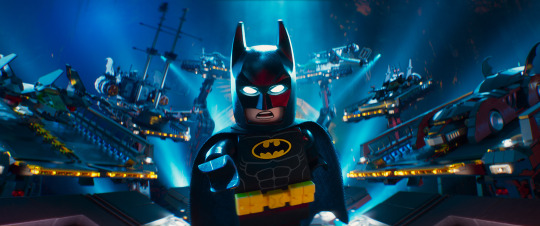
2014′s The LEGO Movie was a surprising hit, and Batman was a big part of that success. As a result, he now gets to star in his own LEGO movie. Is it sad that this has a higher chance of being the better Batman movie than DC’s Batman flick at this point?
Logan
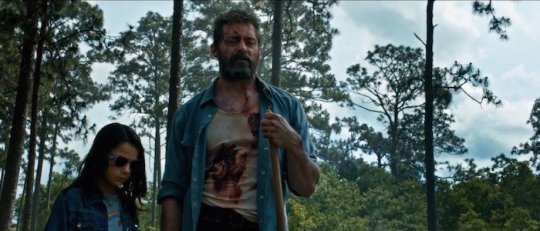
If Oscars could be awarded for trailers alone, Logan would be a front-runner with that Johnny Cash masterpiece. Logan has a very distinctive feel to it that is quite separate from the X-Men film universe, which might turn out to be a really good thing. Let’s be honest: Who is actually able to keep track of that all over the place timeline from the main films anyway? This Last of Us inspired solo film looks like it will do justice to the character of Wolverine and be a fitting sendoff for actor Hugh Jackman.
Beauty and the Beast
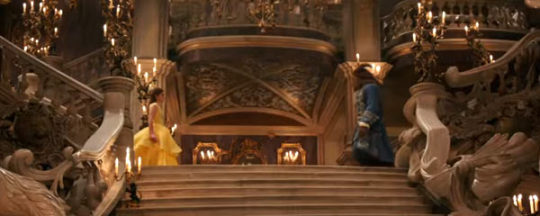
Beauty and the Beast was not one of my favorite Disney movies when I was growing up, but this live-action film looks gorgeous. Emma Watson, beautiful as always, is the perfect fit for Belle, and the voice acting for the servants sounds like it is going to be spot-on. The music sounds great too. All signs seem to point to Disney having another hit on its hands.
The Circle

Let’s follow up Beauty and the Beast with another Emma Watson film, The Circle. Based on Dave Eggers’ 2013 novel of the same name, The Circle imagines what the world would be like if a powerful and influential technology company like Google took control and created a surveillance society, leaving no room for privacy in the digital age. The book was written well enough that it was hard to put down, so I hope the film is just as good, if not better.
Guardians of the Galaxy Vol. 2
The first Guardians of the Galaxy film was an overwhelming success for Marvel. With C-list characters that casual fans had never even heard of, the first Guardians paved the way for other characters like Ant-Man to have their own films. The chemistry between the actors looks even better than before, and the Soul Stone might make an appearance and be the connecting tissue between the Guardians and the Avengers. I doubt this Guardians sequel will buck the trend of Marvel’s less than memorable villains, but it should be a hilarious, entertaining ride with another stellar soundtrack nonetheless.
Pirates of the Caribbean: Dead Men Tell No Tales
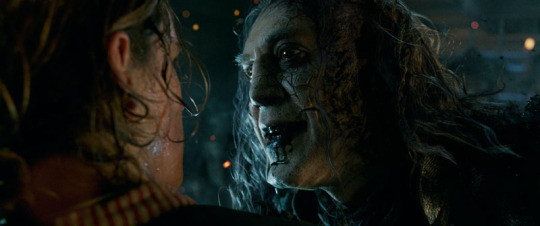
In the fifth film of the series, Johnny Depp’s Captain Jack Sparrow searches for the trident of Poseidon while Javier Bardem’s Captain Salazar hunts him down. Geoffrey Rush’s Captain Barbossa will also turn up again, and Orlando Bloom’s Will Turner will make his return after being absent from the fourth installment. Who knows? Kiera Knightley’s Elizabeth Swan may also make a surprise appearance. I will be the first to admit that I was not a fan of On Stranger Tides. It was so forgettable that the only details I remember were mermaids were in it and Penelope Cruz was a new addition to the cast. I wish the series would go back to what made it so enjoyable in the first film, but the trailer for Dead Men Tell No Tales indicates that it would prefer to spiral further into mysticism and supernatural ghost crews. To be honest, I am only anticipating this film because of three reasons: (1) I want to see if it turns out to be any better than On Stranger Tides, (2) I miss the character of Captain Jack Sparrow, and (3) I am interested to see how Will Turner is doing in his stint as captain of the Flying Dutchman.
Wonder Woman
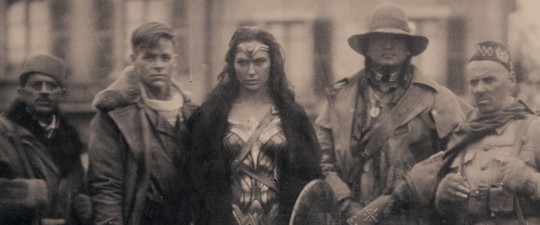
DC desperately needs this film to do well. Batman v. Superman: Dawn of Justice and Suicide Squad were both a mess. Wonder Woman gives DC the opportunity to scale things down a bit and focus on one single superhero. With Patty Jenkins at the helm as director, I am optimistic that Wonder Woman can follow in the footsteps of the first Captain America movie and turn out to be a fun blockbuster film with World War I as its setting. Now who else has Wonder Woman’s theme stuck in their head?
Spider-Man: Homecoming
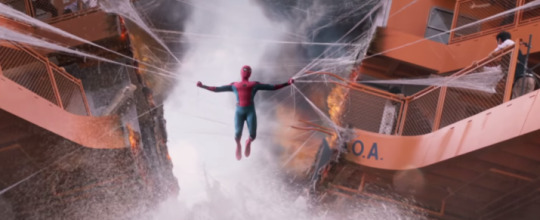
One qualm before we move ahead: the above scene is a ripoff of the train scene in Spider-Man 2. Now that we have gotten that out of the way, it is nice to see Marvel gain control of Spider-Man again. Was I asking for yet another reboot of the classic comic book hero? No. Personally, I liked Andrew Garfield and Emma Stone in the last series. There is no hiding the Amazing Spider-Man movies’ flaws, but they had their tremendously well executed moments too, most memorably this spoiler. However, this new reboot already has some good things going for it. Tom Holland killed it in Captain America: Civil War, and it is going to be great to see Robert Downey, Jr. come in as Tony Stark/ Iron Man as Peter Parker’s mentor. Let’s just hope that Michael Keaton’s Vulture is not Electro-level goofy as a villain.
Dunkirk
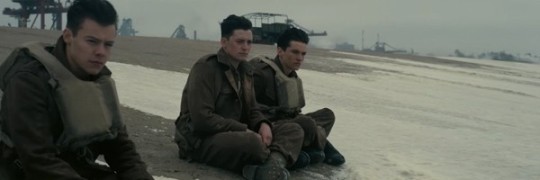
Slap Christopher Nolan’s name on a film, and tons of people are going to wait in line to see it. Nolan is the kind of director that can make the audience feel immersed in the world, and Dunkirk looks to be no different. The cinematography should be amazing, and Hans Zimmer should bring an epic score to the film. The fact that filming took place at the same location as the real historical evacuation during World War II only adds to the excitement for this war thriller.
Kingsman: The Golden Circle
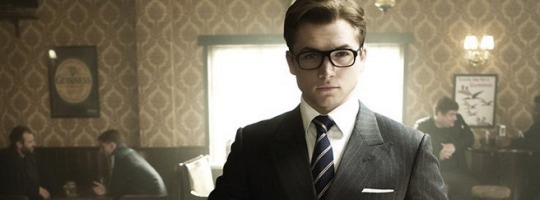
Matthew Vaughn′s Kingsman: The Secret Service was one of my favorite films of 2015. The action was thrilling, the humor was hilarious, the soundtrack was amazing, and the acting was excellent but over the top when it needed to be to fit the film’s tone. Did I want a sequel? No, but I won’t be complaining so long as it does not tarnish the first film.
Blade Runner 2049

I did not see the original Blade Runner until my sophomore year of college. I did not come away loving it, but I appreciated it for what it was, especially for its notable moments like Roy Batty’s “Tears in Rain” monologue. Yet again, I have to ask: Did I want a sequel? No, but Denis Villeneuve, the masterful director of Prisoners, Sicario, and Arrival, has been turning everything he touches into gold lately. Plus, Roger Deakins is handling cinematography responsibilities, Harrison Ford is returning, and Johann Johannsson is teaming up with Villeneuve once again to compose the score.
Thor: Ragnarok
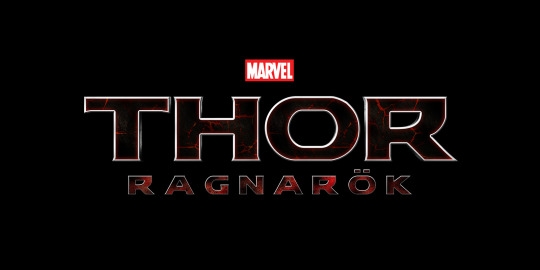
Thor’s films can be utterly dull at some points, but the addition of the Hulk and Doctor Strange should add a much needed kick to Thor’s third solo film.
Justice League

DC has been rushing toward this film, and its track record so far does not leave much room for optimism. Fans can only hope that Zack Snyder can pull it all together and do justice to the comic book characters we grew up loving. I am most interested to see how he will introduce franchise newbies Flash, Aquaman, and Cyborg.
Star Wars: Episode VIII — The Last Jedi
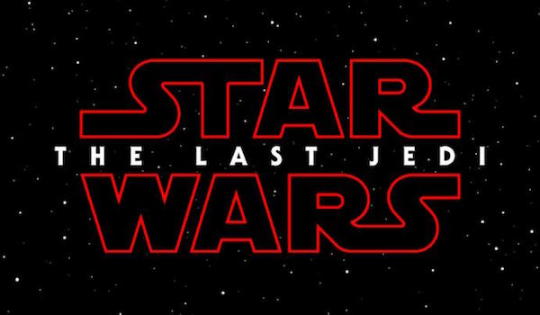
You didn’t think I would finish this list without mentioning Star Wars, did you? Disney and Lucasfilm recently revealed the title for Episode VIII: The Last Jedi. That sent off a wave of speculation. Why is the font red instead of the traditional yellow? Who is the last Jedi? Is it Luke? Will Luke die leaving Rey to be the last Jedi? Jedi can be singular or plural, so does that mean they will both survive? After the somewhat disappointing Rogue One, I am just ready to return to the main episodic storyline where we last left our beloved characters. Both the Resistance and the First Order will be scrambling, with Hosnian Prime decimated and Starkiller Base destroyed. Poe and Finn will probably go off on a mission together while Luke trains Rey, paralleling Snoke’s training of Kylo Ren. Hopefully, we will learn more about the mysterious Snoke and get to see some of the other Knights of Ren. I also hope we will get to see Luke in action as a central character of the film after we only got to see him for the last minute of The Force Awakens, and I have to wonder how they will handle Leia after the saddening, unexpected passing of Carrie Fisher. Tears will undoubtedly be shed when she first appears in the film. In the end, I trust that Disney and Lucasfilm will handle the character with respect for Fisher’s legacy. These 300-odd days will fly by before we know it, and we will all be back in that galaxy far, far away once again.
0 notes
Text
we're doing this again! here are some of the things i read/watched in feb:
dopesick: not sure how i feel about the mix of real/created characters! a lot of the sackler stuff i was familiar with from empire of pain (more on patrick radden keefe later) (relatedly i'm so eager for the nan goldin doc to be streaming over here), some great performances, also doesn't disney have money for better wigs?
happy valley (s3): as a nation we don't deserve sarah lancashire. magnificent television!! good thing f1 is coming back so i can continue to experience tension on sundays etc
lovecraft country: i got myself into a whole jonathan majors situation just in time for creed iii and this was Wild. i wasn't always in love with it but it took some massive swings and honestly reminded me a tiny bit of doctor who just in like the genre-of-the-week approach. also wunmi mosaku, my beloved
justified (s3): as ever this should just be the boyd/raylan show. jfc but raylan is bad at his job. i'm torn re: the progressively more deranged gay antagonist bc he was kind of fun but also whew @ some of those backstory elements
full swing: golf to survive! i didn't know any of these men apart from rory mcilroy! bit of a mixed bag but i loved joel dahmen and his caddy and also matt fitzpatrick, tiny stats nerd from sheffield. lol forever @ zak and lando's golf friend defecting to the sketchy saudi tour etc, like fucking obviously
the green ray: woof a bit close to home! aching for connection, crying on holiday... rohmer girl summer forever in my heart
scream 4: just fine until it goes gleefully Bonkers in the last act
scream 5: last act not as much fun as scream 4, jack quaid is charming, weirdly i found some of the stabbings like off-puttingly intense?
great freedom: this was wonderful and i cried. almost shockingly tender at times and just like, we have always been here? franz rogowski is remarkable and i can't wait to see him in passages (ben whishaw basically doing the andrew scott role from cock 14 years on?? i mean)
devotion: see above re: ongoing jonathan majors situation, thought he was beautiful in this, loved the partnership w glen powell. there's a part that's like you think is going to play out like top gun maverick and then it doesn't because it's based on a true story (why is joe jonas here)
magic mike's last dance: obviously doesn't approach the heights of xxl but channing is still so fucking charming (why is she's the man not streaming anywhere here. i need it). i saw it with some friends and one of them was sad afterwards bc her husband never dances with her - not to be like are straight people okay, but are you?
creed: i am not well versed in the rockyverse lore but i Need to see creed iii due to the jonathan majors situation and i really liked this! mbj charming, i do not care for boxing as a sport but ryan coogler can really move a camera, also pleasantly surprised by the liverpool of it all??
creed ii: this was fine! the fighting didn't have anywhere near the impact of the first one bc this director is not as talented as ryan coogler
patrick radden keefe, rogues: really enjoying this collection of some of his new yorker profiles. listening on audio and i feel like it's kind of rare for a non-fiction author to read their own work this well? also this month i listened to his wind of change podcast (was not prepared for the tommy vietor cameo lol) which was a lot of fun but took a lot of time to not really answer the question
9 notes
·
View notes